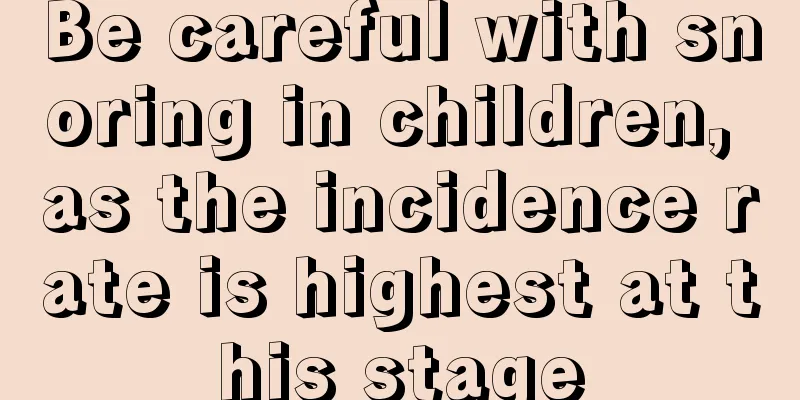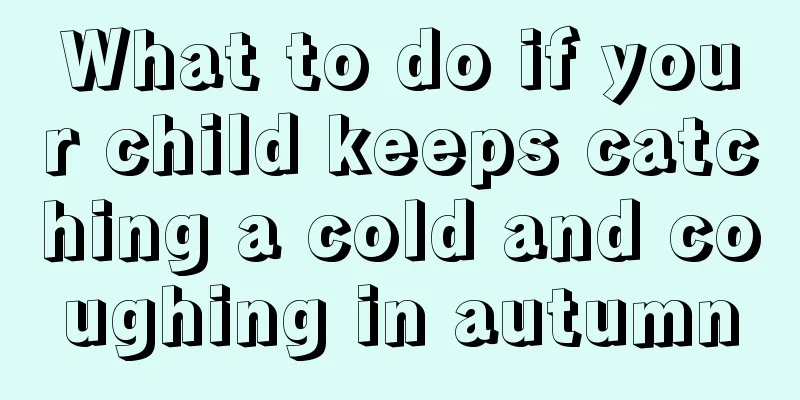What are the symptoms of gastroesophageal reflux in children?

|
I believe that many children have a certain understanding of the symptom of gastroesophageal reflux. It mainly causes patients to experience acid reflux and reflux of contents, which has a relatively large impact on our esophagus. When encountering a disease like gastroesophageal reflux in children, I hope mothers can take their children to the hospital for examination in time. This will be of great help in protecting your children from esophageal mucosal damage. It is recommended that you pay attention to it. Gastroesophageal reflux is a common digestive tract disease in adults. Gastroesophageal reflux in children is more common in the neonatal period and infants, accounting for about 50%. Most cases resolve spontaneously 12 to 18 months after birth, mainly due to incomplete development of the lower esophageal sphincter. In a few cases, symptoms persist until around 4 years of age. The disease can cause respiratory arrest, suffocation and even sudden death in the neonatal period. The disease occurs in infancy and childhood and can cause respiratory diseases and developmental and nutritional malnutrition. There are many methods for diagnosing gastroesophageal reflux, but X-ray examination is still an important means. This method can be used to detect gastroesophageal reflux in children. Under X-ray fluoroscopy, not only can it be determined whether reflux exists, but the form of reflux can also be directly observed, the reflux volume can be estimated, the esophagus's ability to clear refluxed materials, and the gastric emptying situation can be estimated. From the reflux classification, it was found that gastroesophageal reflux in children is mostly mild, and the incidence of gastric and duodenal inflammation and ulcers is quite high. Treatment with gastrointestinal agonists such as domperidone or prebos alone is difficult to be effective, but satisfactory results can be achieved by combining treatment with H2 receptor antagonists such as ranitidine and antibiotics. The cardia function of children is not yet fully developed, so vomiting may occur if they exercise vigorously or cough after feeding. Do not feed too much each time. After feeding, it is best to let the child lie on the adult's shoulder and pat the child's back with your hand to allow the inhaled air to escape. After feeding, be gentle and use less movement when picking up and putting the child down. If the child is shaken too violently, you must pay attention to sleeping on your side and turning sideways and lowering your head as soon as possible to let the child vomit when vomiting, so as to avoid choking the respiratory tract, aspiration pneumonia, or even suffocation, which may lead to life-threatening danger. This article tells us what the symptoms of gastroesophageal reflux are in children. I hope you can remember its symptoms well. For children with gastroesophageal reflux, we recommend that they eat more easily digestible foods and avoid spicy foods so as not to cause greater damage to the esophagus. |
<<: Symptoms of gastroesophageal reflux in children
>>: What are the causes and treatments for hiccups in children?
Recommend
What to do if children have allergies
In daily life, we often hear many parents complai...
Is it appropriate to wean at six months?
We all know that breast milk is very helpful for ...
How to treat children's constant nosebleeds
A child's body gradually improves during the ...
What are the early symptoms of heart disease in children?
For parents, the health of their baby after birth...
What can babies eat to get better quickly from enteritis?
As we all know, the baby's stomach and intest...
Child fell off the sofa
In daily life, some bumps and bruises are hard to...
Baby's nasal congestion, nose and eye mucus
In winter, colds happen from time to time, especi...
Newborn baby has red spots in the eyes
When a pregnant woman is giving birth, she can ch...
How to treat hernia in children?
Many parents may feel unfamiliar with the term &q...
Symptoms of an inflamed belly button in babies
We all know that when a baby is in the mother'...
Why does my child urinate less?
Urinating is a very important thing for the human...
What causes chest pain in children?
If a child has chest pain, it is important to fin...
What are the reasons for children to become fat?
Many babies are actually very fat when they are j...
Why does the child's anus itch? Clean it well
Children aged three or four can basically express...
What anti-inflammatory drugs do children take?
The cold winter weather is quite cold. Even if yo...









